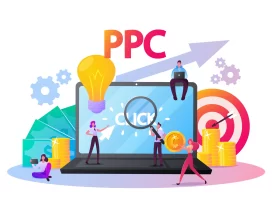
Ecommerce Solutions
Ecommerce solutions provide you with a platform that enables you to centrally manage marketing, sales, and operations for your online business. They may include features like shopping carts and payment processing systems for managing operations more efficiently.
Headless ecommerce solutions isolate the front-end from the back-end of an online store, providing greater flexibility. However, this requires additional technical expertise to maintain, which may increase total project costs.
Customer Relationship Management (CRM)
Better customer relationships equal greater success for any business. IT systems designed to aid customer relationship management have become more prevalent; many utilize data analysis technology in this regard.
E-commerce solutions allow businesses to sell products and services online with the aim of increasing sales and revenue, offering many potential benefits such as:
E-commerce solutions come in various forms to meet the unique requirements of different businesses and industries. B2B (Business-to-Business) solutions are specifically tailored for companies that target other businesses rather than consumers directly for sales purposes and include features like bulk ordering and custom pricing.
SaaS (Software as a Service) solutions such as Big Commerce and Wix can also provide hosted e-commerce platforms and infrastructure, while headless solutions allow the front and back ends of a platform to be separated for greater flexibility; such solutions may be preferred by large enterprises with complex e-commerce requirements.
Inventory Management
Inventory control is key for successful ecommerce operations. This requires tracking product levels and shipping them out directly to customers – an ongoing process which necessitates careful planning as well as an understanding of customer demands.
One common strategy for inventory management is FIFO (first in, first out). This ensures that older stock is sold first to reduce costs and increase profits; however, this method could lead to overstated earnings when prices fluctuate between when products arrive at your warehouse and when they leave for shipment.
Inventory loss due to theft, damage or spoilage can have a devastating impact on an eCommerce business. To mitigate the risk, implement strategies that streamline workflow and enhance storage protection; or use technology to automate inventory management processes and eliminate human errors for greater customer satisfaction rates and optimal inventory levels. You could integrate an order management system with barcode scanner and gain real-time inventory information.
Payment Processing
Ecommerce solutions often include integrated payment processing to make shopping simpler for customers while giving merchants peace of mind that transactions are secure. This feature makes buying easier for your customers while offering you peace of mind that transactions are safe.
When customers make an online purchase, their transaction data travels through your ecommerce solution’s payment gateway and is encrypted for security. Once in the payment processor’s hands, it communicates directly with the bank or card issuer to authorize sales and transfer funds accordingly.
Payment processing is essential to any online business, whether offering buy now, pay later financing services like Klarna or Sezzle or providing third-party checkout integration like Square. Your choice of processor will have an impactful influence both on costs and customer experience; select one that can meet both current requirements while accommodating future expansion of your company.
Shipping and Delivery
Ecommerce solutions are software and technology tools designed to allow businesses to sell products or services over the internet. These typically consist of an online storefront with shopping cart capabilities, payment processing systems and inventory management tools.
Shipping and Delivery are two key aspects of online commerce. Shipping occurs when packages leave a warehouse and travel directly to their final destination; delivery occurs when customers receive their purchases from an ecommerce vendor. It’s essential that businesses understand these two terms so as to communicate them to their customers effectively, in order to prevent confusion among shoppers.
Before searching for an ecommerce solution, it is crucial to first take an honest assessment of your business needs and decide on features most important to you. Next, find a vendor with solutions tailored specifically for these requirements – this will save both time and money while offering customers a better experience. Additionally, choose one which easily integrates with existing tech infrastructures and work processes for maximum effectiveness.








